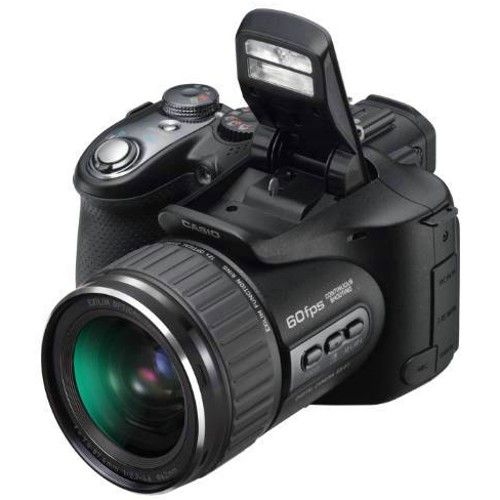Casio's EXILIM EX-F1 promises you 60 frames per second at the press of a button, but do you really need such power in a prosumer digital camera? We got shooting to find out.
Our quick take
The camera might offer a fast capture speed and a long zoom, but the EX-F1 offers little else as a practical camera for daily use. We were surprised by the sluggishness of the start-up (around 4 seconds) and the time it takes to process those images for you to view back.
The 6-megapixel resolution is unlikely to allow you much room for manoeuvre when it comes to cropping or printing your images larger than A4. Combine that with a rather over-complicated camera design that has so many dials it leaves you having to read over the manual a couple of times before you get started and the EX-F1 is really only for those looking to capture and study the moment rather than memories of your family.
As a tool for sports coaches this is just the thing you'll need, for everyone else, if you aren't planning to use that frame rate day-in day-out you'll only be disappointed and frustrated.

Casio EXILIM EX-F1 digital camera - 3.0 / 5
| FOR | AGAINST |
|---|---|
|
|
The size of a DSLR camera, without all the functionality of one, the EX-F1 is a strange beast. From a design perspective the camera is fairly large, mainly thanks to its 12x optical zoom and we presume processing engine to do what it does. A right-hand thumb switch allows the change from STD (standard) to HD (high definition) to HS (high speed).
Not a camera that is likely to suit anyone, the premise from Casio for the EX-F1 is simple: offer those who want it the ability to capture images in incredible slow motion the chance to do so, the idea being that you can capture the exact moment of movement, or the exact image, that you are looking for. Why would you want/need such a feature? Well Casio suggest that it’s good for sporting or wildlife situations when your subject isn't about to stand still so you can get the shot you are after.
Sporting a now rather average 6-megapixel sensor (you can get the newly announced EX-FH20 which offers 8-megapixels, but lesser frame capture rate), the unique selling point here is the 60 frames per second headline capability that means you capture pretty much any moving object without the fear that by the time you press the button you’ll have missed all the action.
To make sure that happens the camera uses a Pre-shot Burst Mode that captures images from the scene prior to the moment when you actually press the shutter button.
In practice and this works very well, it's basically a buffer, and means that if you have been slow on the uptake you still get the shot, although it can be frustrating as well, as it means you could miss the end of the shot. In our tests we tried it in a number of different scenarios including filming someone taking a golf swing (where missing the end of the shot was annoying) to a day at the races in Ascot where the system worked well either end.
In burst mode, the frame rate can also be varied from between 1 and 60 frames per second while shooting. Up to 60 shots can be taken at once, so 60 shots per second for 1 second, or 5 shots per second for 12 seconds, are possible.
As for picture quality, the images are average but not stunning. Noise levels over ISO 400 could be an issue, although this is a camera geared at shooting fast moving subjects not setting-up for a portrait photography in a studio. Levels of detail were good although there was some purple fringing at the edges in landscape images we shot. But then you won’t be using this camera as your regular point and shoot to head out for a day of fun with the family.
But the movie modes muddy the water, making you wonder whether this is a stills camera or a camcorder. The movie capabilities mean you can capture a whopping maximum 1200fps (there are 300 and 600fps options), however there is a catch: the greater the frame rate, the lower the resolution and so while you might be able to capture very subtle movements in a fast moving subject, it will be YouTube quality or less when you come to play it back: high speed movie options give you 512 x 384 (300fps, 30-300fps), 432 x 192 (600fps), 336 x 96 (1200fps).
You do get normal capture modes as well, capturing HD at 1920 x 1080 (60fps), or 1280 x 720 (30 fps), as well as a standard-def 640 x 480 option.
Here, in our tests, the slow-mo works in achieving what you would want from a camera that offers the ability to record everything in slow motion, but unless you are in to recording your golf swing or are heading out on safari every month we struggle to see why you would want it. And that's the problem of the EX-F1. It's such a niche camera that it's only likely to appeal to a select few people like sports coaches or wildlife photographers.
To recap
The camera might offer a fast capture speed and a long zoom, but the EX-F1 offers little else
